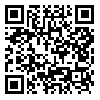BibTeX | RIS | EndNote | Medlars | ProCite | Reference Manager | RefWorks
Send citation to:
URL: http://tumj.tums.ac.ir/article-1-506-en.html
Background: The papanicolaou (pap) smear has been used to screen cervical cancer since 1940. Recently, a number of new technologies have been developed to improve the detection of cervical cancer and its precursors. However, there is substantial controversy about whether the new tests offer meaningful advantages over the conventional pap smear. Ideally, these new tests will increase the early detection of meaningful pap smear abnormalities, reduce the number of unsatisfactory smears and provide fewer ambiguous results.
Methods: In this prospective study the result of Liquid- based cytology smears (Liquid prep method) compared with conventional pap smears in terms of adequacy and ASC diagnosis in 289 patients in pathology department of mirza kochak khan hospital (Tehran, 2005- 2006). The smears were interpreted based on Bethesda system 2001.
Results: In conventional pap smear method, the number of occasions of unsatisfactory smear was 24(5%). In Liquid- based cytology method 66(22.8%) smears were unsatisfactory, In which difference between unsatisfactory groups were statistically significant (p<0.05), Also ASC diagnosis in conventional method 5(1.8%) as compared with Liquid- based cytology 6(2.1%), was not statistically significant (p>0.05).
Conclusions: There was no significant difference between two methods in term of ASC diagnosis but in conventional method adequacy of specimen was significantly better as compared with this Liquid- based cytology method.
| Rights and permissions | |
 |
This work is licensed under a Creative Commons Attribution-NonCommercial 4.0 International License. |





